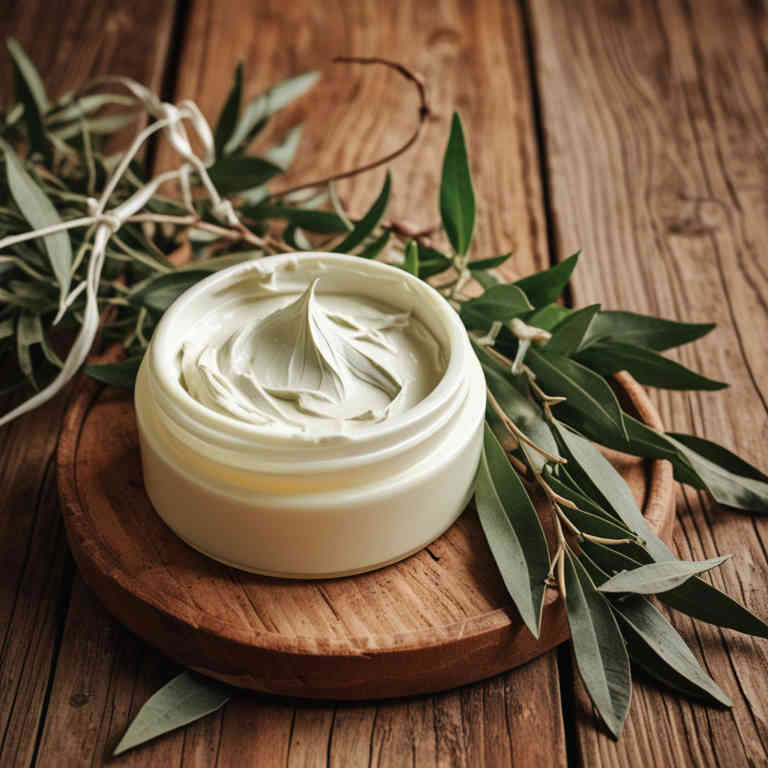Ruscus aculeatus cream for medicinal use

Ruscus aculeatus cream is a topical preparation made from the dried leaves of the plant Ruscus aculeatus, commonly known as butcher's broom.
This herb has been traditionally used in herbalism for its purported ability to improve circulation and reduce inflammation. The cream is often applied to the legs and feet to alleviate symptoms of varicose veins and spider veins. It is also used to support venous health and may help with conditions like hemorrhoids.
In herbal practice, it is typically prepared with a base of carrier oils or beeswax to create a soothing and easily absorbed topical treatment.
Uses
Ruscus aculeatus cream has been used to treat circulatory and cardiovascular conditions for centuries, particularly in European traditional medicine.
Historically, it was valued for its ability to alleviate symptoms of heart failure, arrhythmia, and peripheral vascular disorders. In traditional herbal practices, the cream was also applied topically to reduce swelling and inflammation, especially in cases of varicose veins and leg ulcers. Modern research has supported its use in improving blood flow and strengthening capillary walls, making it a popular ingredient in contemporary herbal formulations for circulatory health.
Today, it is commonly found in natural remedies aimed at supporting heart and vascular function.
Benefits
Ruscus aculeatus cream has health benefits such as promoting wound healing, reducing inflammation, and improving circulation.
It is commonly used to treat varicose veins and hemorrhoids due to its ability to strengthen blood vessel walls. The cream contains compounds that may help alleviate symptoms of chronic venous insufficiency. It is also believed to have soothing effects on the skin, making it useful for minor cuts, bruises, and skin irritations.
Overall, Ruscus aculeatus cream is a natural remedy that supports vascular health and skin recovery.
Constituents
Ruscus aculeatus cream active constituents include saponins, flavonoids, and mucilage, which contribute to its therapeutic properties.
These compounds are known to support vascular health and may help in the management of conditions such as varicose veins and hemorrhoids. The saponins in the cream are believed to enhance circulation and reduce inflammation. Flavonoids act as antioxidants, protecting cells from oxidative stress.
Mucilage provides a soothing effect, making the cream beneficial for skin irritation and minor wounds.
Preparation
To make Ruscus aculeatus cream, start by harvesting the dried leaves of the plant, ensuring they are clean and free from contaminants.
Next, grind the leaves into a fine powder using a mortar and pestle or a blender. Combine the powdered leaves with a base of beeswax and a carrier oil, such as coconut or almond oil, in a double boiler. Heat the mixture gently until the beeswax melts, then stir in a small amount of essential oil for fragrance and additional benefits.
Allow the mixture to cool and solidify before storing it in a dark glass jar to preserve its potency.
Side Effects
Ruscus aculeatus cream may lead to gastrointestinal discomfort, including nausea, vomiting, and diarrhea, particularly with high doses or prolonged use.
It can also cause skin irritation or allergic reactions in some individuals, such as redness, itching, or a rash at the application site. In rare cases, it may interact with medications, especially those affecting blood pressure or heart rate, leading to unpredictable effects. Long-term use might result in more severe side effects, including liver damage or cardiovascular issues.
It is important to consult a healthcare professional before using this cream, especially for individuals with pre-existing medical conditions or those taking other medications.